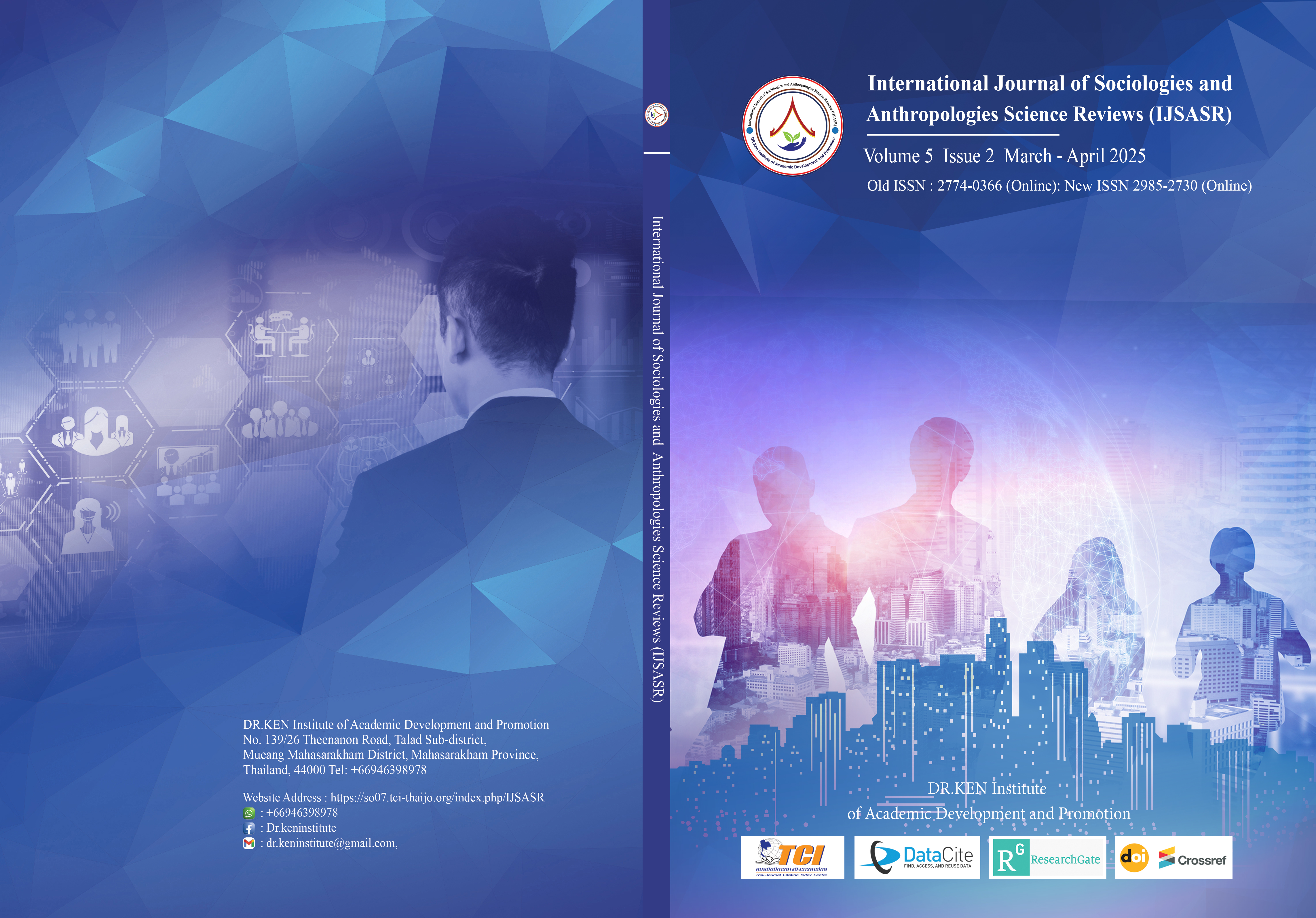Effects of Dancesport on Walking Balance and Spin Balance of University Athletes at Shenzhen Technology University
Main Article Content
Abstract
Background and Aim: Since walking balance and spin balance are considered crucial skills for dancesport athletes, whether they can perform well or not partially depends on having good postural stability skills or not. Therefore, this research aims to study the effects of dancesport on walking balance and spin balance of university athletes at Shenzhen Technology University, to improve walking balance and spin balance of university athletes.
Materials and Methods: This research was quasi-experimental. The research population was university dancesport athletes, individuals possessing fundamental dance skills but not classified as professional athletes, with a total of 30 athletes. The sample group for this research encompasses the entire population, comprising 30 university dance sports athletes. In this experiment, the training will be conducted over a total of 8 weeks, with 5 days per week and 2 hours per day. In addition, there will be tests for walking balance and spin balance conducted a total of 3 times, which include (1) before the start of training; (2) after completing 4 weeks of training; and (3) after completing training in week 8. This study utilized mean, standard deviation, one-way repeated measures ANOVA, and dependent t-tests for data analysis, with the significance level established at 0.05.
Results: After 8 weeks of training with the developed dancesport training program, there was a statistically significant improvement at the 0.05 level in walking balance and spin balance of university athletes.
Conclusion: The developed dance sports training program was effective in improving the walking balance and spin balance of university athletes.
Article Details

This work is licensed under a Creative Commons Attribution-NonCommercial-NoDerivatives 4.0 International License.
Copyright on any article in the International Journal of Sociologies and Anthropologies Science Reviews is retained by the author(s) under the under the Creative Commons Attribution-NonCommercial-NoDerivatives 4.0 International License. Permission to use text, content, images, etc. of publication. Any user to read, download, copy, distribute, print, search, or link to the full texts of articles, crawl them for indexing, pass them as data to software, or use them for any other lawful purpose. But do not use it for commercial use or with the intent to benefit any business.

References
Bielmann, M., Rumpf, M. C., & Cronin N. J. (2016). A prospective study on balance ability and lower leg injury in elite cross-country skiers. Injury Epidemiology, 3(1), 23-26.
Chang, Y., Wong, M.K.Y., & Ho, R.T.S. (2020). Effects of dance training on balance in elderly: a systematic review. Phys Ther Sport, 41(8), 156-167.
Cheng, W. (2021). Kinematic analysis of Latin dancer's turn. Master’s Degree Thesis: Central China Normal University.
Gao, J., Chen, S., & Zou, J. (2018). The Effects of 16-Week Dance Sport Program on Physiological and Psychological Adaptation in Elderly Males. Frontiers in Psychology, 9, 1459.
Hu, Y., & Pi, J. (2008). Sports Dance. Changsha, Hunan University Press.
Kim, J., Yun, C., & Pack, S. (2013). Effects of the Dancesport program on changes in the thickness of femoral muscles and knee function in CKP middle-aged women. Journal of Dance Education, 30(1), 209-220.
Lee H, Lee M & Hong K. (2009). Effects of 9 weeks of Dancesport training on variables related to falling injury in the elderly women. Korean Journal of Sport Science, 20(4), 778-790.
Liiv, H., Jürim ̈ae, T., M ̈aestu, J., Purge, P., Hannus, A., & Jürim ̈ae, J. (2014). Physiological characteristics of elite dancers of different dance styles. Eur. J. Sport Sci, 14(3), 37–41.
Liu, G. (2016). Research on modeling of human standing balance system and evaluation method of balance ability. Master’s Degree Thesis: Yanshan University.
Liu, X., Li, J., & Zhang, H. (2018). Effects of DanceSport Training on Walking Balance and Gait Stability in University Athletes. International Journal of Sports Science & Coaching, 13(4), 612-623.
Michalska, J., Kamieniarz, A., Michalski, R. (2018). The influence of dance sports training on postural stability and reaction time of elite dance sport athletes. PLoS One, 13(8), 89-95.
Peng, C., & Ye, W. (2012). Discussion on the internal and external systems and training methods of sports dance training. Journal of Chongqing University of Science and Technology (Social Science Edition), 164(01), 163-164, 171.
Smith, A.R., Jones, B.D., & Lee, M.C. (2020). Effects of DanceSport Training on Walking Balance and Postural Stability in Collegiate Dancers. Journal of Dance Medicine & Science, 24(2), 63-71.
World DanceSport Federation. (2024). DanceSport For All. https://www.worlddancesport. org/ about/all
Wu, H., Gau, J., Hsu, C., Tu, J., & Tsao, T. (2012). Effects of Habitual Low-impact Dance on the Balance and Torque of the Knee of Older Female Individuals. Advances in Physical Education, 2(2), 39-43.
Zahiu, M., Manos, M., & Drăghici, G. F. (2020). Coordination in formation dancesport at beginner level. Discobolul–Physical Education. Sport and Kinetotherapy Journal, 59(3), 271-288.
Zao, W., Meng, G., & Wang, D. (2000). Research progress of human balance function test system. Ergonomics, 11(3), 46-50.
Zhai, R. (2021). Experimental study on the effect of functional training on the balance ability of college standard dance players. Master’s Degree Thesis: Hunan Normal University.
Zhang, H. (2022). Experimental study on the effect of BOSU ball training on the balance ability of aerobics beginners of physical education majors. Master’s Degree Thesis: Guizhou University of Science and Technology.
Zhang, L. (2017). Research on improving Latin dance rotation techniques based on basic ballet training. Master’s Degree Thesis: Capital Institute of Physical Education.






